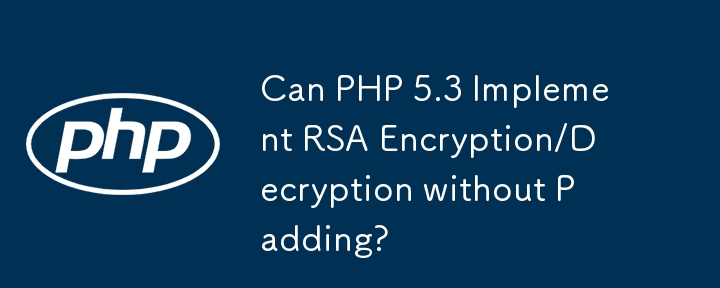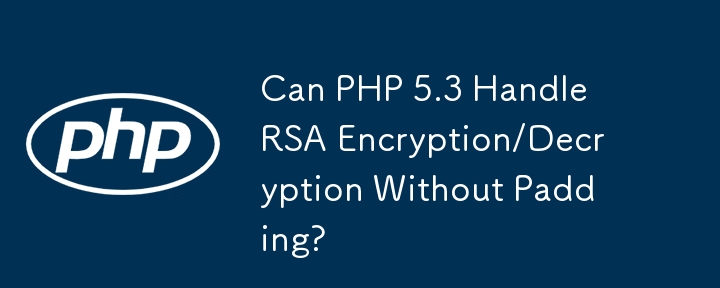Found a total of 10000 related content

How to implement data grouping in PHP?
Article Introduction:Implementing data packets in PHP can be implemented through array operations and loops. 1) Use loops and array operations to group student data by class; 2) Statistical analysis can be performed when grouping, such as calculating the number of students in each class; 3) Multi-level grouping can be implemented, such as grouping by class and gender, but attention should be paid to performance and memory usage.
2025-05-23
comment 0
443

How to operate CSV files in PHP?
Article Introduction:Operating CSV files in PHP is mainly implemented through fgetcsv and fputcsv functions. 1) Read CSV file. Use the fgetcsv function to read and process data line by line. 2) Write to CSV file. Use the fputcsv function to write array data to the file. Note that line-by-line reading is used when file encoding and large file processing to optimize performance.
2025-05-20
comment 0
500
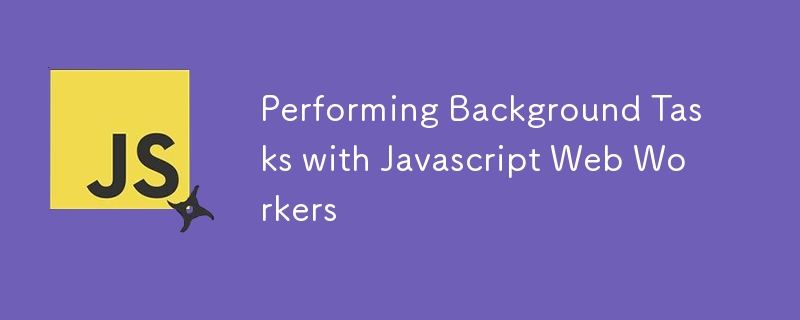
Performing Background Tasks with Javascript Web Workers
Article Introduction:JavaScriptWebWorkers is a key technology to improve web page performance and prevent interface lag. It avoids blocking the main thread by creating background threads to perform complex computing tasks, such as data processing, image operations, and encryption and decryption, and thus keeps the page responsive to user interaction. The steps to using WebWorkers include: 1. Write a Worker script file; 2. Load the script through newWorker() in the main thread. The communication method is: send messages through postMessage(), and onmessage receives messages, but the transmitted data will be serialized and cannot contain functions or special types. Optimization suggestions include: multiplexing Worker instances, avoiding small tasks, and paying attention to data transmission
2025-07-09
comment 0
320

php get tomorrow's date
Article Introduction:Getting tomorrow's date in PHP can be achieved through the strtotime() function or the DateTime class. 1. Use strtotime(): output tomorrow's date through echodate("Y-m-d", strtotime("tomorrow")), which is suitable for basic needs. 2. Use the DateTime class: Implemented by $date=newDateTime('tomorrow');echo$date->format('Y-m-d'), supporting object-oriented operations, time zone settings and chain calls, suitable for complex scenarios. Notes include setting the correct time zone and location
2025-07-16
comment 0
548

Decoding the Server-Side: Your First Steps into PHP's Architecture
Article Introduction:PHP runs on the server side. When the user requests the page, the server executes the code through the PHP engine and returns HTML to ensure that the PHP code is not seen by the front end. 1. Request processing: Use $_GET, $_POST, $_SESSION, $_SERVER to obtain data, and always verify and filter inputs to ensure security. 2. Separation of logic and display: Separate data processing from HTML output, use PHP files to process logic, and template files are responsible for displaying, improving maintainability. 3. Automatic loading and file structure: Configure PSR-4 automatic loading through Composer, such as "App\":"src/", to automatically introduce class files. Suggested projects
2025-07-27
comment 0
954

How to calculate the total number of elements in a PHP multidimensional array?
Article Introduction:Calculating the total number of elements in a PHP multidimensional array can be done using recursive or iterative methods. 1. The recursive method counts by traversing the array and recursively processing nested arrays. 2. The iterative method uses the stack to simulate recursion to avoid depth problems. 3. The array_walk_recursive function can also be implemented, but it requires manual counting.
2025-05-15
comment 0
359

How to implement hook function in PHP?
Article Introduction:Implementing hook functions in PHP can be implemented through observer mode or event-driven programming. The specific steps are as follows: 1. Create a HookManager class to register and trigger hooks. 2. Use the registerHook method to register the hook and trigger the hook by the triggerHook method when needed. Hook functions can improve the scalability and flexibility of the code, but pay attention to performance overhead and debugging complexity.
2025-05-15
comment 0
314

Introduction to Java Native Interface (JNI) Use Cases
Article Introduction:Common usage scenarios for JNI include improving the execution efficiency of performance-sensitive parts, accessing operating system or hardware-specific features, reusing existing local library resources, and enhancing security and anti-reverse protection. 1. For high-performance tasks such as image processing, encryption and decryption, C/C can be used to implement key logic through JNI to improve efficiency, but attention should be paid to cross-language call overhead; 2. When accessing device drivers, sensor data or system APIs is required, it can be implemented with the help of the JNI call platform related local libraries, and compatibility issues should be considered; 3. In order to reuse existing C/C code assets, it can be encapsulated through JNI for Java application calls to reduce duplicate development, but a reasonable interface should be designed; 4. Placing the key logic at the native layer can increase the reverse difficulty
2025-07-04
comment 0
406
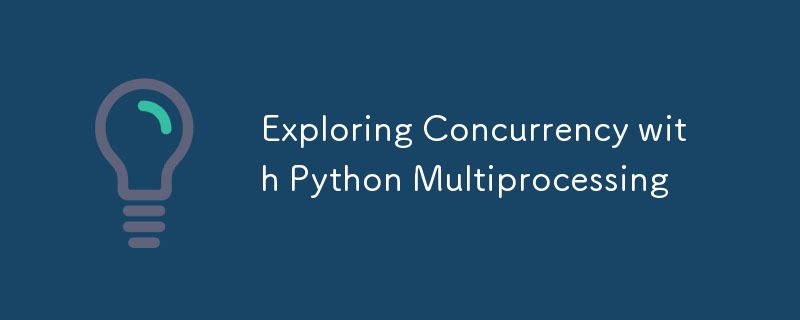
Exploring Concurrency with Python Multiprocessing
Article Introduction:Python's multiprocessing module implements parallel processing by bypassing GIL restrictions, which is suitable for CPU-intensive tasks. Its core is the Process class, which can start independent processes. For example, the show_pid function in the example is executed by two processes separately. Data sharing is mainly implemented through Queue or Pipe and Value/Array, such as passing data in queues to ensure process security. For batch tasks, Pool provides an efficient solution, supporting map() and apply_async() methods to assign tasks. However, it is necessary to pay attention to performance trade-offs: process startup overhead, big data transmission delay, shared state complexity and platform differences may affect efficiency.
2025-07-21
comment 0
572
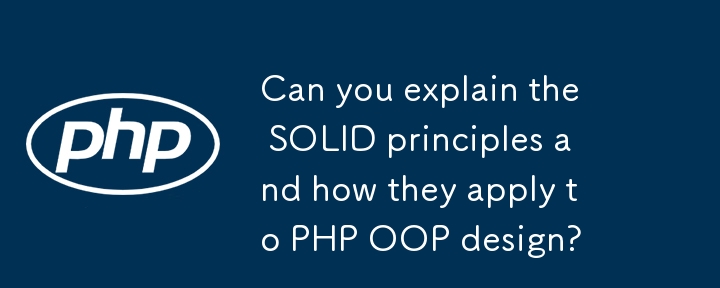
Can you explain the SOLID principles and how they apply to PHP OOP design?
Article Introduction:SOLID principle improves code maintainability and scalability through five core principles in PHP object-oriented design. 1. The single responsibility principle (SRP) requires that each class has only one responsibility, and the separation of concerns is achieved through splitting functions; 2. The opening and closing principle (OCP) advocates extending behavior through interfaces or combinations rather than modifying the original code; 3. The Richter replacement principle (LSP) ensures that subclasses can replace the parent class without destroying logic and avoid behavior inconsistencies; 4. The interface isolation principle (ISP) recommends defining fine-grained interfaces to avoid redundant dependencies; 5. The dependency inversion principle (DIP) decoupling high-level and underlying modules by relying on abstract types (such as interfaces) rather than concrete implementation, and is commonly implemented by dependency injection.
2025-06-19
comment 0
646

Quick Tip: How to Get the Current Date in PHP
Article Introduction:PHP provides a variety of functions and classes for processing dates and times. This article will explore different ways to get the current date and time in PHP and discuss some additional considerations when dealing with time in PHP.
Key Points
PHP provides a variety of methods to get the current date and time, including the date() function, the time() and gmdate() functions, and the DateTime classes. Each method allows for different formatting options and considerations, such as time zones.
When using the date() function and the DateTime class, the server's local time zone is used by default. To use a different time zone, you can use date_default_timez
2025-02-08
comment 0
995

How do you implement custom session handling in PHP?
Article Introduction:Implementing custom session processing in PHP can be done by implementing the SessionHandlerInterface interface. The specific steps include: 1) Creating a class that implements SessionHandlerInterface, such as CustomSessionHandler; 2) Rewriting methods in the interface (such as open, close, read, write, destroy, gc) to define the life cycle and storage method of session data; 3) Register a custom session processor in a PHP script and start the session. This allows data to be stored in media such as MySQL and Redis to improve performance, security and scalability.
2025-04-24
comment 0
719
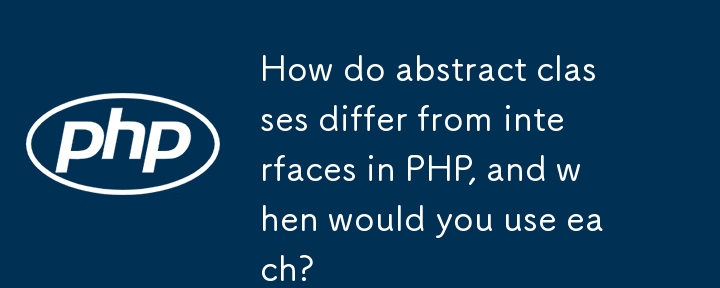
How do abstract classes differ from interfaces in PHP, and when would you use each?
Article Introduction:Abstract classes and interfaces have their own uses in PHP. 1. Abstract classes are used to share code, support constructors and control access, and include abstract methods and concrete methods. 2. The interface is used to define behavior contracts. All methods must be implemented and are public by default, and support multiple inheritance. 3. Since PHP8, the interface can contain default methods to implement, but there is still no constructor or state. 4. When using abstract classes, you need to encapsulate implementation details; when using interfaces, you need to define cross-class behavior or build plug-in systems. 5. Can be used in combination: abstract classes implement interfaces or combine multiple interfaces into one abstract class. Select whether the structure plus sharing behavior (abstract class) or only the structure (interface).
2025-06-04
comment 0
1120

php iterate over a date range
Article Introduction:It is recommended to use the DatePeriod class to traverse date ranges in PHP. 1. The DatePeriod class was introduced from PHP5.3, and date traversal is implemented by setting the start date, end date and interval. For example, generate a date list from 2024-01-01 to 2024-01-05, which does not include the end date by default; 2. If you need to include the end date, you can adjust the end date or set the INCLUDE_END_DATE parameter; 3. The manual loop method can also complete the traversal using the DateTime object and the modify() method, which is suitable for scenarios where step size needs to be flexibly controlled; 4. Pay attention to the time zone problem that should be explicitly set to avoid the system's default time zone affecting the result; 5. PHP automatically handles leap years
2025-07-14
comment 0
166

How to implement data sharding in mysql? Sharding optimization method
Article Introduction:MySQL itself does not have built-in data sharding function, but can be implemented through architectural design and tools. Data sharding is to split large table data into multiple databases or tables according to rules to improve performance. Common implementation methods include: 1. Hashing fragments by user ID, which are evenly distributed but troublesome to expand capacity; 2. Shaving fragments by range, which are suitable for time-class fields but are easy to hot spots; 3. Consistent hashing algorithms, which reduce the amount of expansion migration but complex implementation. After sharding, cross-slice query, data migration, distributed transactions and other problems need to be dealt with. Middleware such as MyCat, Vitess or application layer logic processing can be used, and shard keys should be selected reasonably, shard balance should be monitored, excessive sharding should be avoided, and backup strategies should be improved.
2025-06-04
comment 0
1098

php get unix timestamp from date
Article Introduction:Getting the Unix timestamp corresponding to dates in PHP can be implemented in a variety of ways. Common methods include: 1. Use the strtotime() function to apply to date strings in common formats, which are concise but sensitive to formats; 2. Use DateTime::createFromFormat() is more suitable for parsing date strings in fixed specific formats to improve accuracy; 3. When processing dates with time zone information, you can use the DateTime class to combine getTimestamp() or strtotime() to parse the time zone, and the time zone can be adjusted uniformly. Select the appropriate method according to the scene and pay attention to input verification to avoid errors.
2025-07-05
comment 0
204

php timestamp to date
Article Introduction:In PHP, the most straightforward way to convert a timestamp to a date is to use the built-in date() function or the DateTime class. 1. When using the date() function, just pass in the format string and timestamp, such as: date('Y-m-dH:i:s',$timestamp); 2. If you need object-oriented processing, you can use the DateTime class to set the timestamp through the setTimestamp() method and format the output with format(); 3. Time zone issues need to be noted. The server time zone is used by default. You can set it through date_default_timezone_set() or specify the time zone during DateTime construction to ensure accuracy.
2025-07-04
comment 0
445
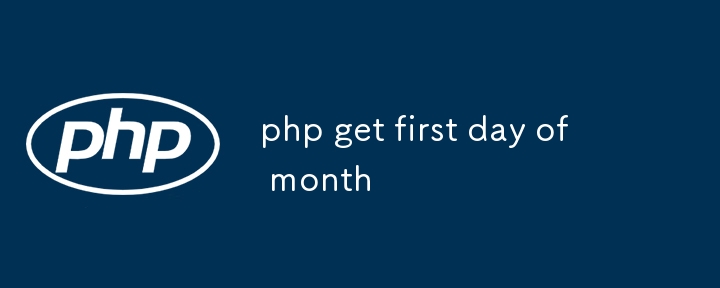
php get first day of month
Article Introduction:To get the first day of a certain month, it can be implemented through PHP built-in functions. The core methods include: 1. Use the date() function to directly construct the string of the first day of the current month; 2. Use strtotime() to obtain the timestamp; 3. Use the specified date to calculate the first day of the month; 4. Use the DateTime class for object-oriented style processing. In addition, attention should be paid to time zone settings, formatted output and application in database queries. These methods are flexible and suitable for different scenarios, the key is to choose the right approach according to your needs and pay attention to details such as time zone and format control.
2025-07-05
comment 0
529
